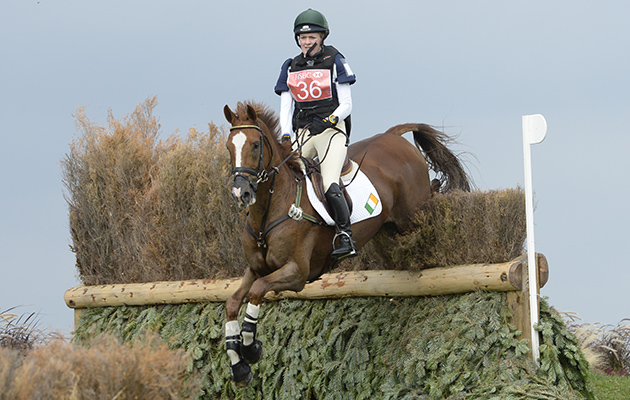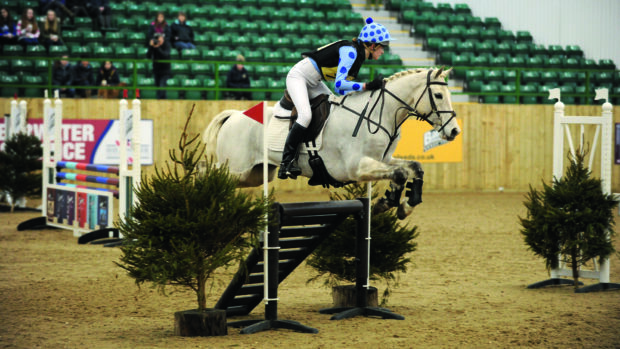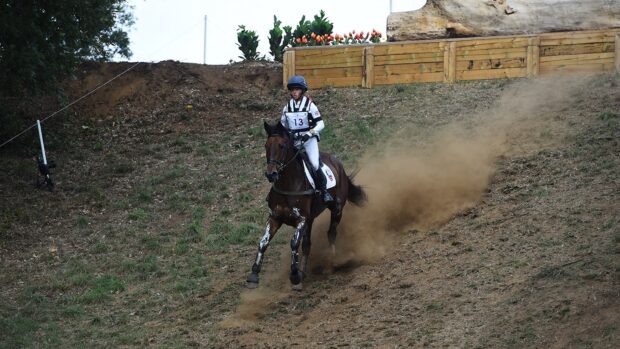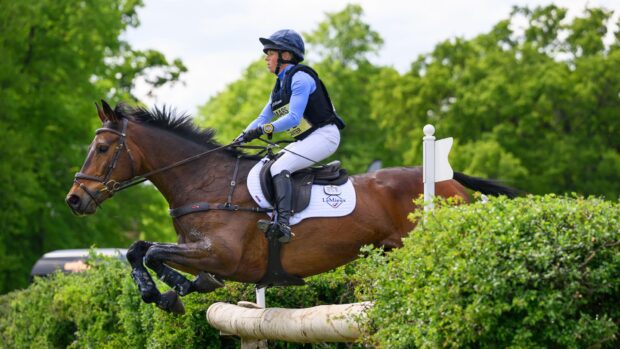Take a look at this exercise from five-star Irish event rider, Clare Abbott (pictured), that with the help of using cavaletti, is designed to steady and balance the canter, both on the approach to a fence and on landing
Aim
Using cavaletti to help train your horse has lots of benefits including improving elasticity and flexibility. Adding a fence before and after a row of cavaletti allows the rider to maintain a steady and balanced canter to, and away from, a fence and work on landing on the correct lead.
The fact that the horse sees another round of cavaletti in front of him after landing should help teach him to shift his weight back onto the hind end and be more careful.
The goal is to improve the quality of the horse’s canter and balance, and for the rider to maintain softness and control throughout the exercise.
The exercise: using cavaletti

1. When your horse is capable of performing pole work at trot and canter in a straight line, you can then progress to cantering over four cavaletti, which I set up as bounces on a 20m circle. There should be four human paces at the widest part and three at the narrowest.
2. The rider must first concentrate on cantering through the centre of the cavaletti and then continue on round the circle in a good rhythm. After a few repetitions, you can then move to the inside or outside of the poles to shorten and lengthen your horse’s stride.
3. The height of the cavaletti can be altered as the horse progresses (raise one end on the inside, outside or alternate ends depending on the horse’s weaknesses). This will improve the horse’s balance and carefulness and encourage him to look where he is placing his feet.
4. Now add in two fences on the diagonal line. This gives the rider the flexibility to perform changes of rein while maintaining the quality of the canter and rhythm to, and away from, a fence. The fences can be small oxers (or any fence you wish) to encourage the horse to stretch and bascule. It is the rider’s job to land and pick up a good rhythm back to the cavaletti.

Set of four Pole Pods at amazon.co.uk
Use these stackable pods to raise ground poles for cavaletti. They can be used one or two pods high.

Agrihealth Jump Blocks at viovet.co.uk
These mini blocks offer two heights for raised poles – 15cm and 25cm – to tailor your work to your horse.
Tips and pitfalls
● This exercise can be physically demanding so should be progressed over a number of weeks. If your horse is young or inexperienced, start off with two cavaletti and build up to four.
● Your horse may become unbalanced and change legs through the cavaletti. It’s important that, with the rider’s help, they keep the correct bend throughout their body and stay in the centre of the poles. Check there is enough bend in the canter on the pole-free side of the circle. Keep the cavaletti small until you can do this smoothly and easily.
● If your horse drifts either way, it is highlighting that he’s weaker in that direction. Sometimes all it takes is the rider to stay focused on the exact line and soon the horse gets the hang of it. To help him, you can raise the poles slightly on the side he falls in/out to help encourage him to stay straight.
You might also be interested in:
The five-star eventer shows how the figure-of-eight jumping exercise can help develop balance, rhythm and the ability to land on

#SundaySchool: how to improve control with Blyth Tait

Sarah Bullimore’s figure-of-eight jumping exercise for focus

Subscribe to Horse & Hound magazine today – and enjoy unlimited website access all year round
Horse & Hound magazine, out every Thursday, is packed with all the latest news and reports, as well as interviews, specials, nostalgia, vet and training advice. Find how you can enjoy the magazine delivered to your door every week, plus options to upgrade your subscription to access our online service that brings you breaking news and reports as well as other benefits.



